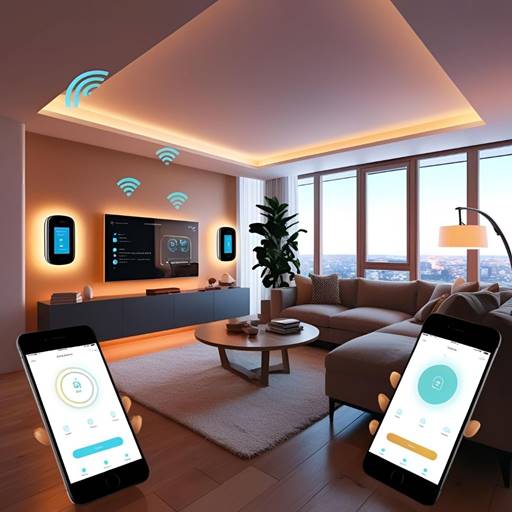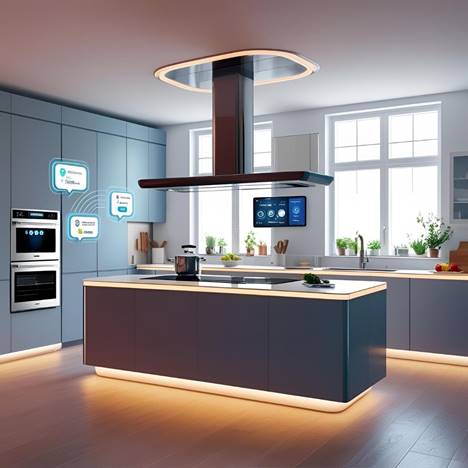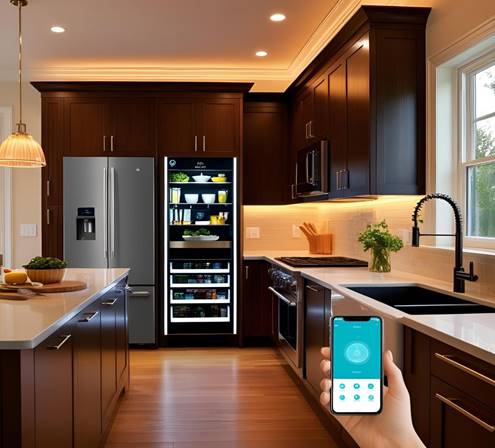
Technology is transforming interiors, but the best smart homes hide complexity behind simplicity. The focus is on invisible functionality—where tech enhances daily life without disrupting aesthetics.
Key Elements of Discreet Smart Home Design
1. Hidden & Minimalist Tech
- Recessed & Wireless:
- Flush-mount outlets & in-wall cable management
- Wireless charging built into furniture (tables, nightstands)
- Disguised Devices:
- Smart speakers camouflaged as decor (fabric-wrapped, wood-finish)
- TVs that double as digital art (Samsung The Frame)
2. Automated Ambiance
- Lighting:
- Warm, dimmable LEDs on circadian rhythms
- Motion-activated under-cabinet or stair lighting
- Climate & Air:
- Silent smart vents & thermostats with matte finishes
- Air purifiers hidden in cabinetry
3. Silent & Effortless Functionality
- Motorized Window Treatments:
- Linen or wood blinds with quiet automation
- Touchless Controls:
- Voice-activated or gesture-based switches
- Smart mirrors with hidden displays
4. Furniture with Integrated Tech
- Modular designs with built-in power & USB
- Ottomans & side tables with hidden storage for routers/hubs
- Kitchen countertops with inductive charging zones
Best Smart Features for an Uncluttered Home

| Tech Need | Sleek Solution | Aesthetic Benefit |
| Lighting Control | Lutron Caséta (matte switches) | No bulky panels |
| Entertainment | Samsung Frame TV (art mode) | Disguised as wall decor |
| Climate | Ecobee Smart Thermostat (custom wood faceplate) | Blends with interiors |
| Security | Aqara Motion Sensor (recessed) | Invisible monitoring |
| Charging | Native Union Dock (stone/marble finish) | Doubles as decor |
Design Principles for a Tech-Savvy Home

✅ Do:
- Choose devices in neutral tones (matte black, white, wood)
- Opt for fabric, metal, or ceramic finishes over plastic
- Use architectural integration (e.g., lighting in coves, speakers in ceilings)
❌ Avoid:
- Visible wires or flashing LED indicators
- Bulky gadgets that clash with minimalist decor
- Loud or abrupt automation (e.g., jarring alarm beeps)
The Future: Truly Invisible Smart Homes
- Self-powered sensors (kinetic or solar)
- AI-driven automation (anticipates needs without input)
- Bio-materials (circuitry printed on wood or stone)
By treating technology as a silent partner—not the focal point—homes become both cutting-edge and calming.
